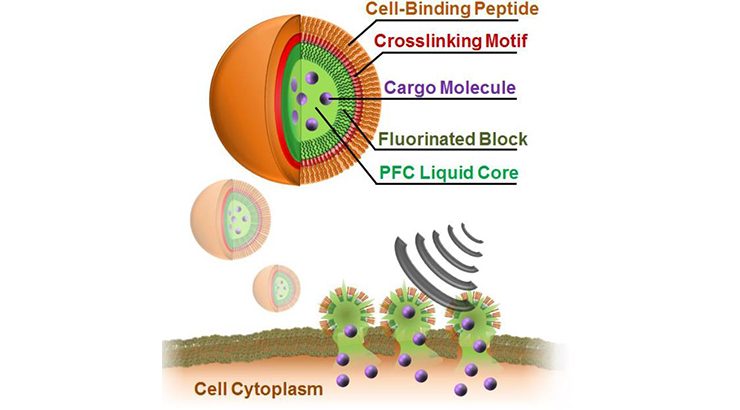Stimuli-Responsive Peptide Nanoparticles
ID# 2017-4626
Technology Summary
The present invention is a drug delivery vehicle that uses nanoparticles that can be activated via ultrasound (US) to deliver membrane-impermeable cargo directly into cells with spatial and temporal precision. Key to the formation of these particles is a synthetic peptide designed to self-assemble at the surface of a US-sensitive liquid droplet. Utilizing peptide assembly allows for cell-targeted, cargo-loaded nanoparticles to be prepared in a single and mild synthetic step that is conducive to sensitive biomolecules. Fluorous tags transiently mask cargo, including antibodies, to mediate efficient dispersion into the nanoparticle’s ultrasound-sensitive liquid perfluorocarbon core. The invention exploits a physical US cavitation phenomenon to rupture the nanoparticles and allows for direct delivery of loaded cargo into cells, thereby avoiding endocytosis.
Model formulations have been synthesized and initial delivery capabilities demonstrated in cell-based experiments. Prototype samples can be made available.
Application & Market Utility
This invention provides a mechanism to deliver therapeutics directly to the cytoplasm of a diseased cell. Therefore, the present technology could have applicability to vast market needs, such as treatment of cancer, autoimmune disorders, inflammatory diseases, diabetes, cardiovascular diseases, etc. Specifically, the technology can could be used as a carrier for site-specific delivery of biosensors, genome editing tools, diagnostic agents, or membrane impermeable therapeutics.
Next Steps
Seeking industry collaboration and licensing opportunities to drive forward clinical validation and use.

